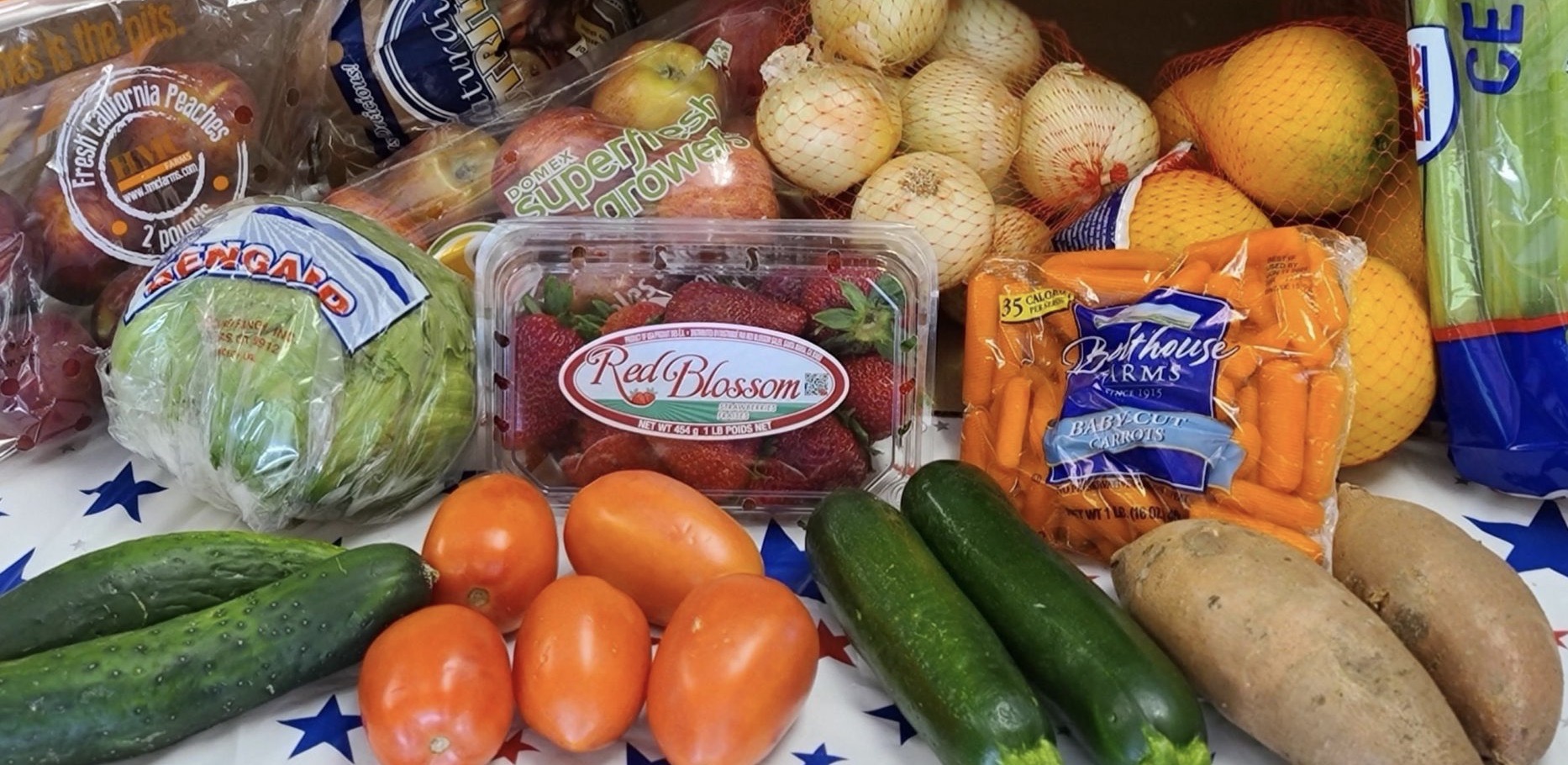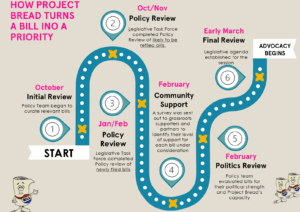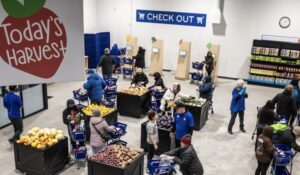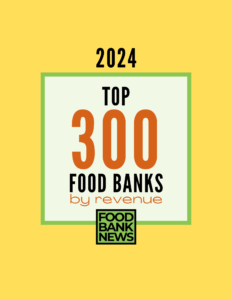March was not a good month for food banks.
Early in March, food banks found out that $500 million for LFPA, a popular federal program that gives them money to buy food from local farms and ranchers, would go away. Toward the end of the month, they learned that another $500 million allocated toward TEFAP, a staple of federal food bank funding, would also end.
While food banks have long taken setbacks in funding in stride, the aggressiveness of the combined $1 billion of cuts are expected to take a toll. In Texas, El Pasoans Fighting Hunger Food Bank has already announced that 20% of its agency partners and 20% of its mobile pantries will no longer receive food from it. Whether food banks measure the cuts in pounds, truckloads, or dollar value, they will likely feel the blow.
“It’s a big hit, that’s for sure,” said Brian Greene, CEO of Houston Food Bank, which expects its allocation for TEFAP (The Emergency Food Assistance Program) to be cut by about 40% or about 40 tractor-trailer loads a month.
Here are seven takeaways on the cuts:
1/ The origin of the cuts makes them somewhat less surprising
The current cuts have their origin in a couple of investments announced by the Biden administration toward the end of its term. In October 2024, the administration said it would put another $500 million into the LFPA (Local Food Purchase Assistance) program, which it had created in 2022 (originally with $400 million of funding over two years) as a way to improve upon the Covid-era Farmers to Families food box program (see our story here). During its two years of operation, the LFPA program had proven extremely popular with both farmers and hunger relief organizations (see our story here).
In that same October 2024 announcement, the Biden administration also said it would make another $500 million in TEFAP-like funding available to food banks through the USDA’s Commodity Credit Corp., adding to nearly $1 billion of funding it had announced in September 2022. The funding from CCC, a government agency created during the Depression in part to stabilize farm income and prices, was separate from “regular TEFAP,” which remains in place and in fiscal 2024 amounted to about $461 million.
As devastating as the cuts are, they fit into a pattern of see-saw swings in funding that occur as administrations change. “We all are very much aware that the CCC funds came from the Biden administration, so it was of no shock that the new administration would seek to roll back something,” said Paule Pachter, CEO of Long Island Cares in New York.

Even so, the size and nature of the LFPA and CCC funding makes their loss hard to accept. Bart Brown, President and CEO of Ozarks Food Harvest in Missouri, noted that the CCC funding, meant explicitly to support agriculture, supports purchases of mostly protein items, frozen meat and fresh produce. “It’s a lot of stuff that is really expensive or almost impossible to replace right now,” he said. “So not only do we have to replace a lot of food, it’s literally the most expensive food we can buy.” Ozarks expects to lose $3 million in food out of a budget of about $12 million.
2/ Food banks are turning to tested means of relief
Food banks pull many levers to source and pay for food, and they’ll continue to pursue all of them in the new environment. At Connecticut Foodshare, where 65% of revenue comes from private donations, fundraising will be a focus. “As always, with food banking, private donations are a number-one way we’re going to balance whatever loss we’ve got at the federal level,” said Jason Jakubowski, President and CEO. Similarly, Ozarks Food Harvest has initiated a multi-channel fundraising campaign specifically around the federal cutbacks, Brown said, and Long Island Cares plans to use its April direct mail campaign as a “crisis wake up call” for donors, Pachter said.
Food banks will also amp up their efforts in retail recovery. Long Island Cares. which expects to rescue about 4 million pounds of “perfectly good food” from area grocers this year, hopes to expand that program, especially with four new Aldi’s locations now opening in its area, Pachter said. Amazon, which contributes about 100,000 pounds a month from three locations, is the food bank’s largest retail donor, “so we’re certainly making sure that they’re aware of the situation,” he said.
But even if they leverage a variety of measures, food banks will still find it hard to make up for the lack of federal funding. “There’s no way it’s going to come close to how much we’re going to lose in the government funding,” said Greene, who noted that Houston Food Bank is expecting a 20 million pound loss of food, net of everything else it can do to adjust.
3/ State governments could make a big difference, or not

If they can, food banks will turn to state funding as a way to make up for the cuts in federal funding. In Connecticut, where the legislature is currently negotiating a two-year budget, Jakubowski and his cohorts are asking for an investment of $10 million for food banks, up from $900,000 currently. “They’ve asked us what we need and what we need is $10 million,” Jakubowski said. Feeding New York State, meanwhile, is asking for $75 million to fully fund two statewide hunger relief programs in the 2025-2026 budget.
But other states are not as receptive to such calls, and food banks in those states don’t expect to reap any such benefits. Food banks in eleven states, for example, are still hoping to get their states to draw down federal money currently available to them to fund summer meals for school-age kids.
4/ Cuts to SNAP could inflict much more harm
As the country’s most far-reaching program to address food insecurity, SNAP has a budget of more than $100 billion and distributes roughly ten times more food than all the food banks in the country combined. Yet, devastating cuts to the program are being proposed, some of which could easily reduce the total outlay of the benefit by 10% or more.
Viewed from that perspective, a 10% or so cut to SNAP is “financially the equivalent of wiping out every food bank in the U.S.,” noted Greene. “The potential hit to SNAP is way larger in terms of the impact on people who are struggling with this,” he said, adding, “If the general public thinks that we can make up the difference, that’s absolutely not true. That’s why our efforts on the farm bill I think are everything right now.”
5/ Trade mitigation could help, or not
When tariffs during the first Trump administration resulted in economic harm to farmers, the administration responded with a trade mitigation program that purchased about $2.3 billion worth of agricultural products that got distributed to food banks via TEFAP. Whether the same outcome will occur under the current trade war is hard to predict.
Many food bankers agree that relief for farmers is likely, yet they also acknowledge that there is no way of telling what form the aid could take. “I’m absolutely convinced there is going to be some trade mitigation to farmers,” Jakubowski said. “I’m not as confident that food banks are going to be part of the solution the way that they were seven or eight years ago.”
6/ LFPA may go away, but relationships with farmers will remain
With funding for LFPA winding down, it will be harder for food banks to maintain the relationships they’ve built up with farmers. But the good news is that those relationships have been struck, and one way or another, they are likely to endure. In Wisconsin, for example, Hunger Task Force last year used $250,000 in LFPA funding to distribute farm products to 114 pantries in 29 urban and rural counties, as well as to supplement the contents of its senior food boxes with fresh food.
The timing of the LFPA cuts comes as many farmers in Wisconsin have already finalized their plans for the growing season and made purchases of seeds and supplies. So Hunger Task Force has decided that it “will be honoring our commitments to local farmers and ensuring that their business plans are not disrupted by the termination of this program,” said Matt King, CEO. Like many food banks facing LFPA’s wind-down, Hunger Task Force will be looking to its donor community to “help step up and fill the gap.”
7/ There is one thing to feel good about
The food bank system is strong and has gotten stronger in recent years, as it has pursued new sources of food, especially through partnerships related to retail grocery stores and produce. “It’s not like we’re going back to where we were 20 years ago,” Greene noted. “Even with these cuts, we’ll be at higher levels of distribution than we were pre-pandemic.” – Chris Costanzo
Like what you’re reading?
Support Food Bank News













